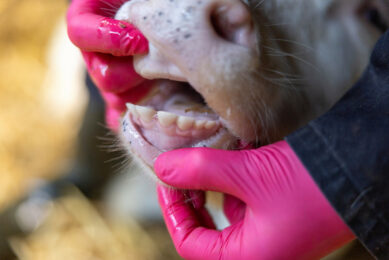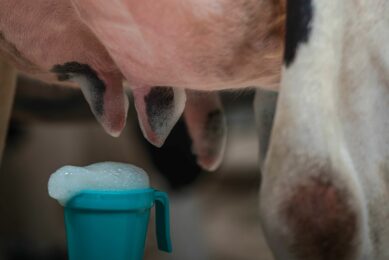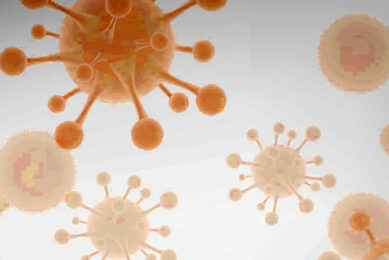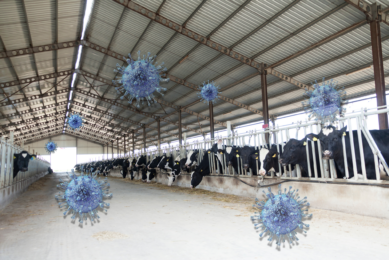Milk flow traits as biomarkers of lameness
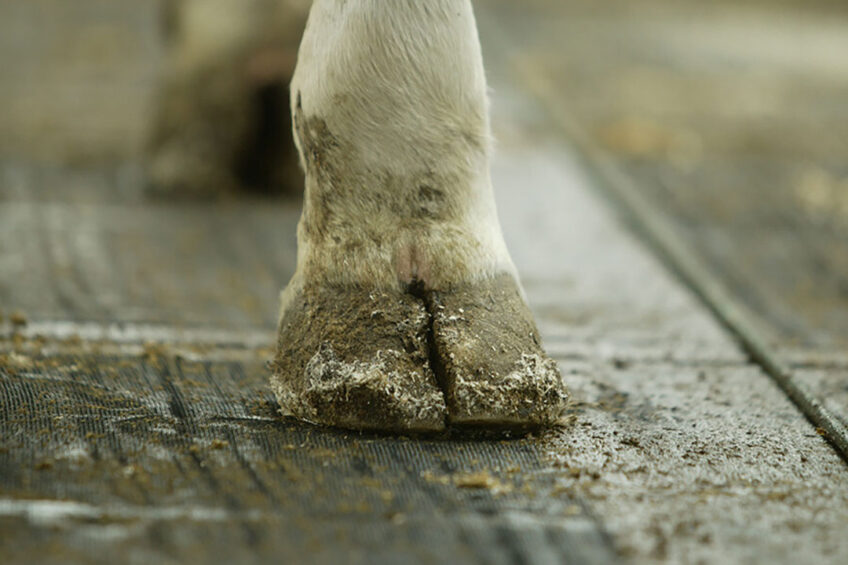
Lameness has a major impact on herd profitability and on the health and welfare status of cows. Current research is focusing on the best use of new technologies as tools to measure and monitor the health status of cows. To increase the prediction accuracy of automatic lameness detection, associations between the independent variables should be included for effective management of performance and hoof health of dairy cows.
In a study recently published in Agriculture (2021), researchers explain how milk flow traits can act as biomarkers of lameness in dairy cows and the impact of lameness on milk flow traits. In their study, they elaborate on the relationship of milk flow traits to lameness. Results from their previous study had indicated that lameness influences the frequency of cow visits to the automatic milking system, the productivity of the cows and the interval between milking.

The study
The aim of the current study was to investigate the relationship between lameness and milk flow traits as biomarkers of lameness in dairy cows. For this study, 73 healthy and 55 lame cows were selected. Lameness was diagnosed by a local specialised veterinarian, according to the standard procedure. The milking properties of cows were evaluated twice in a row – during evening and morning milking. The milk flow measurements were taken by two electronic mobile milk flow meters.
Lameness and milk yield
All the milk yield traits (total milk yield per milking; milk yield during the first, second and third milking minutes) were higher in the healthy cows compared to the lame cows (Table 1). “The increase of stress in lame cows affected the milking process – weaker stimulation of milk ejection reflex and consequently lower milk yield in lame cows,” they said, concluding that milk yield may be a good trait for better prediction accuracy of lameness.
Studies show that electrical conductivity of milk is a suitable indicator trait for both clinical and subclinical mastitis. Electrical conductivity is determined by the concentration of anions and cations. For example, if a cow suffers from mastitis, the concentration of Na+ and Cl− in the milk increases, which leads to increased electrical conductivity of milk from the infected quarter. In this study, all the indicators of milk electrical conductivity (electrical conductivity at highest milk flow, electrical conductivity during the initial time of milking, maximum electrical conductivity after reaching the highest milking speed) were higher in cows with signs of lameness compared with healthy cows.
Milking time and speed traits
All the milking duration indices (time at total milk yield, time to milk flow of 0.5 kg/minute, time of main milking phase, time at plateau phase, time at decline phase) were higher in healthy cows during both morning and evening compared to the lameness group during both milking periods. Only time of incline in milk flow from 0.5 kg/min until reach of the plateau phase was higher in the lameness group. On the other hand, the average values of all milking speed traits were slightly higher in healthy cows compared to in lame cows.
Bimodality in milk flow of cows
Bimodality of milk flow is defined as the delayed milk ejection at the start of milking. Bimodality is associated with pre-milking delay time and teat preparation and has a negative effect on milking efficiency, causing increased milking machine time. High prevalence of bimodality in milk flow trait may indicate poor health. In this study, the analysis showed that the bimodality of the milk flow was statistically significantly associated with the health status of cows. The prevalence of bimodality of milk flow was 23.3% for the healthy cows, whereas for the lame cows it was 56.4%. This observation was attributed to the increased stress in lame cows that affects the milking process, resulting in weaker stimulation of the milk ejection reflex.
Figure 1 – Cortisol concentration (µg/dl) in blood of healthy (HL) and lame (LA) cows

Blood cortisol concentration
Cortisol concentration in the animal can be a valuable biomarker of chronic stress. Pain experienced from lameness could act as a stressor in dairy cattle. Adverse stressors trigger responses of the adrenal glands, which in turn increases glucocorticoid concentrations, resulting in high production of cortisol. In this study, the risk of lameness was clearly indicated by an increase in blood cortisol concentration: if this level in cows exceeded 1 µg/dL, the likelihood of identifying lameness increased by 4.9 times. The level of blood cortisol in the healthy group was lower than that in the lameness group. The researchers emphasised that the significantly higher levels of plasma cortisol concentration in the lameness group can be associated with stress experienced by those animals and their more pronounced reactions to the milking process. They added that the negative relationship between milk yield and blood cortisol concentration in the lame cows could be attributed to the deteriorating health and welfare of the animals due to the lameness. Blood cortisol concentration was positively associated with lameness as well as with bimodality of the milk flow curve.
Conclusion
The researchers concluded that milk flow traits can act as biomarkers of lameness in dairy cows. When multivariable binary logistic regression analysis was conducted, it was shown that blood cortisol concentration, total milk yield and bimodality of the milk flow curve can be used to predict lameness early. Of all the parameters studied, the risk of lameness was most clearly indicated by an increase in blood cortisol concentration; if this level exceeded 1 µg/dL, the likelihood of identifying lameness increased by 4.9 times.
Join 13,000+ subscribers
Subscribe to our newsletter to stay updated about all the need-to-know content in the dairy sector, two times a week.



